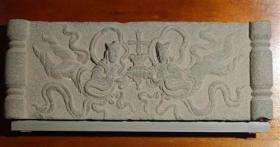Surprising find: Medieval China was religious melting pot

(PhysOrg.com) -- Though it has gained a reputation for being closed off to the outside world, new research shows China has a long history of multiculturalism that extends back to the dynastic era.
Led by historians Professor Sam Lieu and Dr Ken Parry, from Sydney's Macquarie University, the research team has examined ancient ruins and artefacts in southern China's Fujian province, discovering a strong presence of foreign religious communities - Christians, Muslims and Hindus - during the Mongol Period (13th -14th centuries).
Armed with a seven-year discovery grant from the Australian Research Council, the researchers have been given rare access to the excavation sites and museums in the region and will publish their findings next year.
"This is the first time researchers from outside China have been given this kind of access to artefacts and ruins that span back to the days of the Old Silk Road and Marco Polo," Parry said.
"The excavation of sites in and around the city of Quanzhou has uncovered large numbers of headstones that point to Christian and Muslim burials, as well as a Hindu temple. The numbers of headstones don't belong to just one or two foreign traders but suggest large numbers of foreigners were present at the time."
"Quanzhou in Southern China, known as Zayton to Marco Polo, was the Hong Kong of its day."
Not only has the discovery led the researchers to believe that the numbers of Christians, Muslims and Hindus in China at the time were much greater than first thought, it has indicated that the religious communities existed harmoniously.
"Many of the Christian headstones we've discovered in southern China feature a common motif - a cross sitting on a lotus flower," Parry said.
"This motif continuously appears and suggests that Christians in particular coexisted happily with Buddhists enough to borrow from their religious imagery - its East and West meeting each other in the Middle Kingdom."
Parry also explained that the flurry of trade in Ancient China which opened up with the Old Silk Road brought a cultural diversity to China that remained until the 10th century.
"The 7th and 8th centuries witnessed a boom in international trade activity and diverse cultural and religious influences, but the early 10th century saw the Tang Dynasty clamp down on foreigners and a trend toward xenophobia," he said.
"So what we can see from looking at the Mongol Dynasty is a pattern which has arguably repeated itself throughout Chinese history - a shift towards growth and internationalisation followed by a rejection of outside influences."
Parry said he hoped the research team would return to southern China later in the year before publishing their findings.
"There are still a number of mysteries that remain unsolved - for example, what happened to the iconography of the cross on the lotus between the Tang and Mongol Dynasties - a period of 300 years. It was clearly known somewhere in order for it to reappear again." Parry said.
"And perhaps a bigger consideration is why Christianity never assimilated with Chinese culture in the way that Buddhism and Islam have, given all three religions have had a presence in China for centuries."
Provided by Macquarie University





















